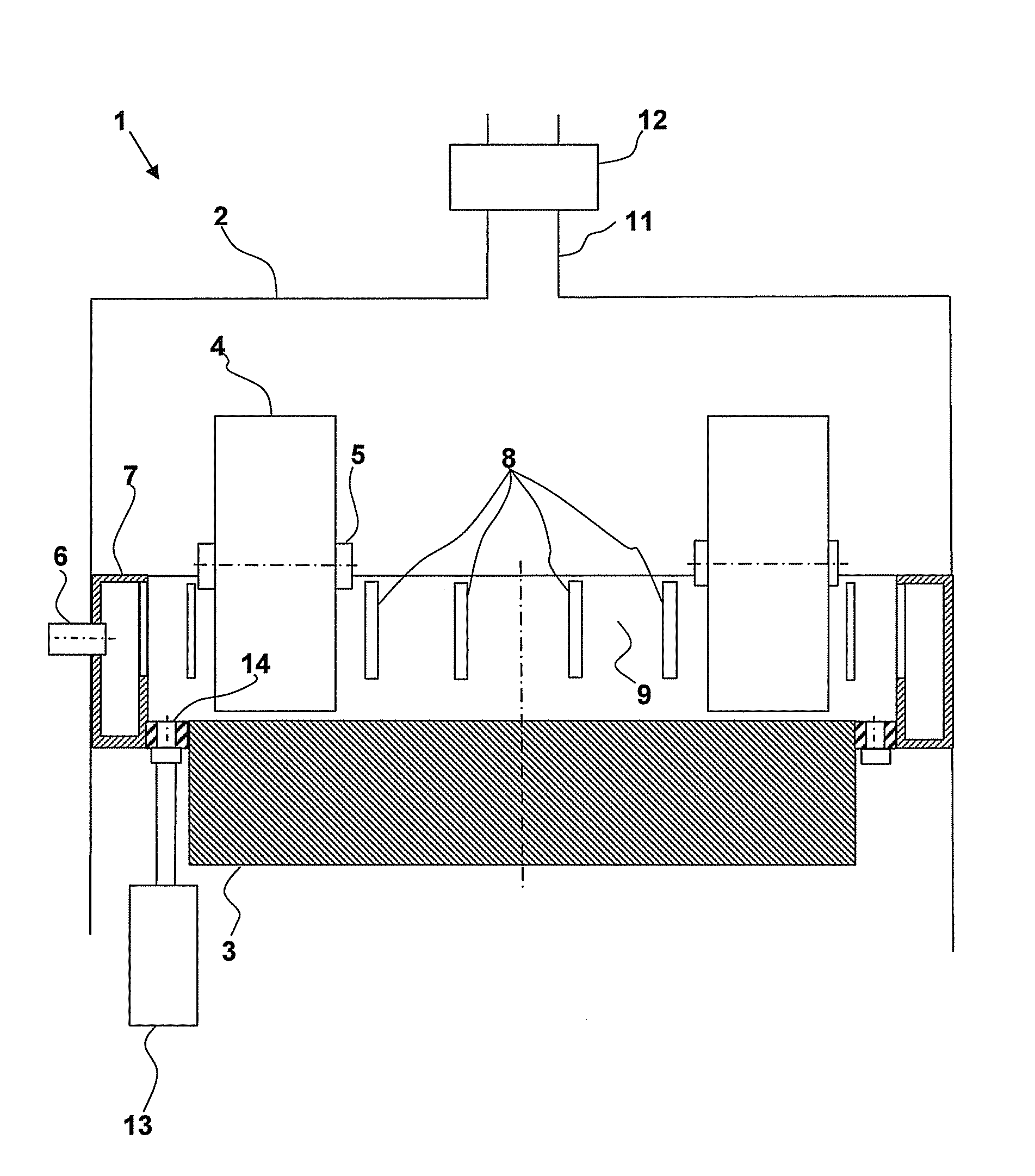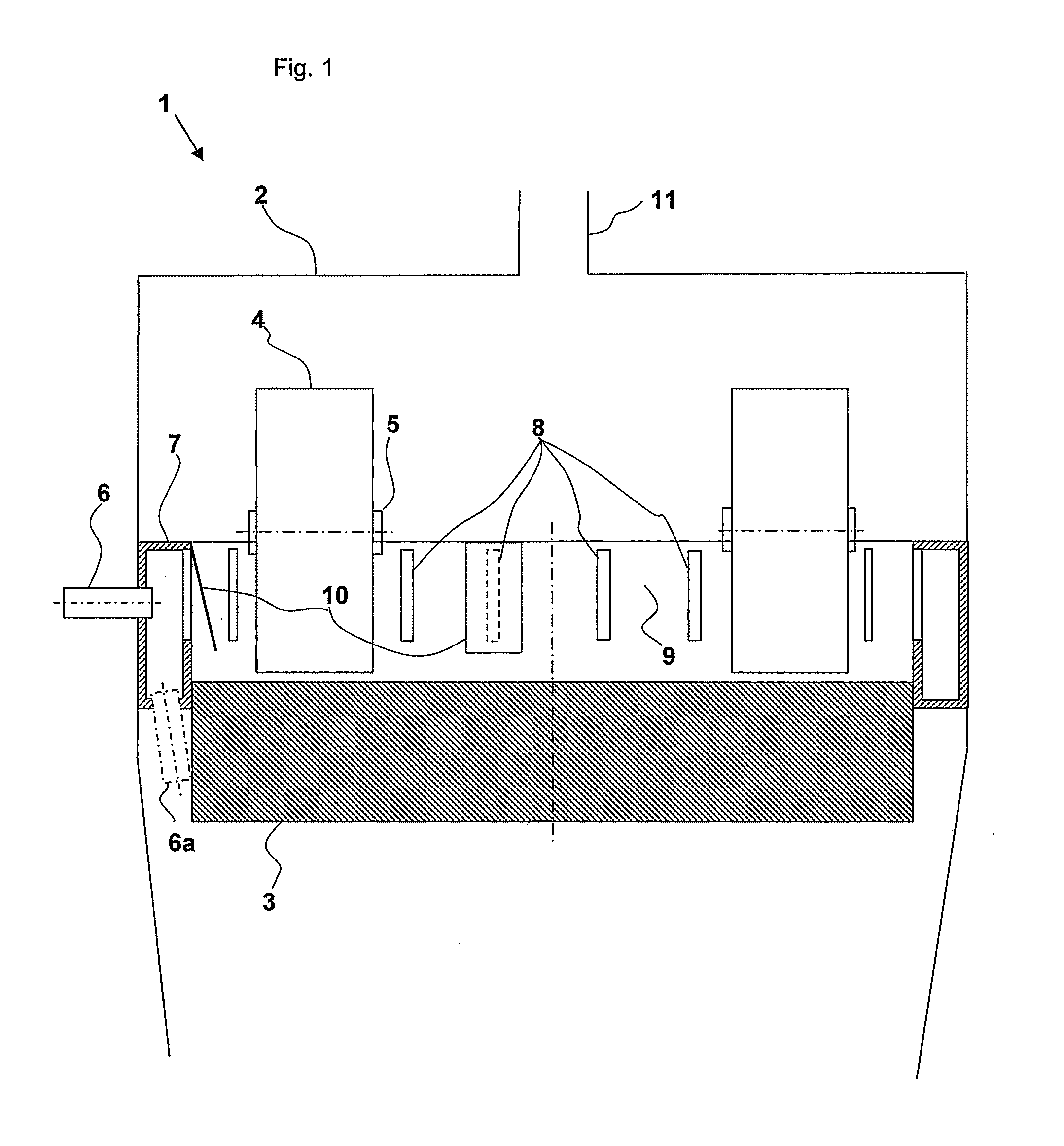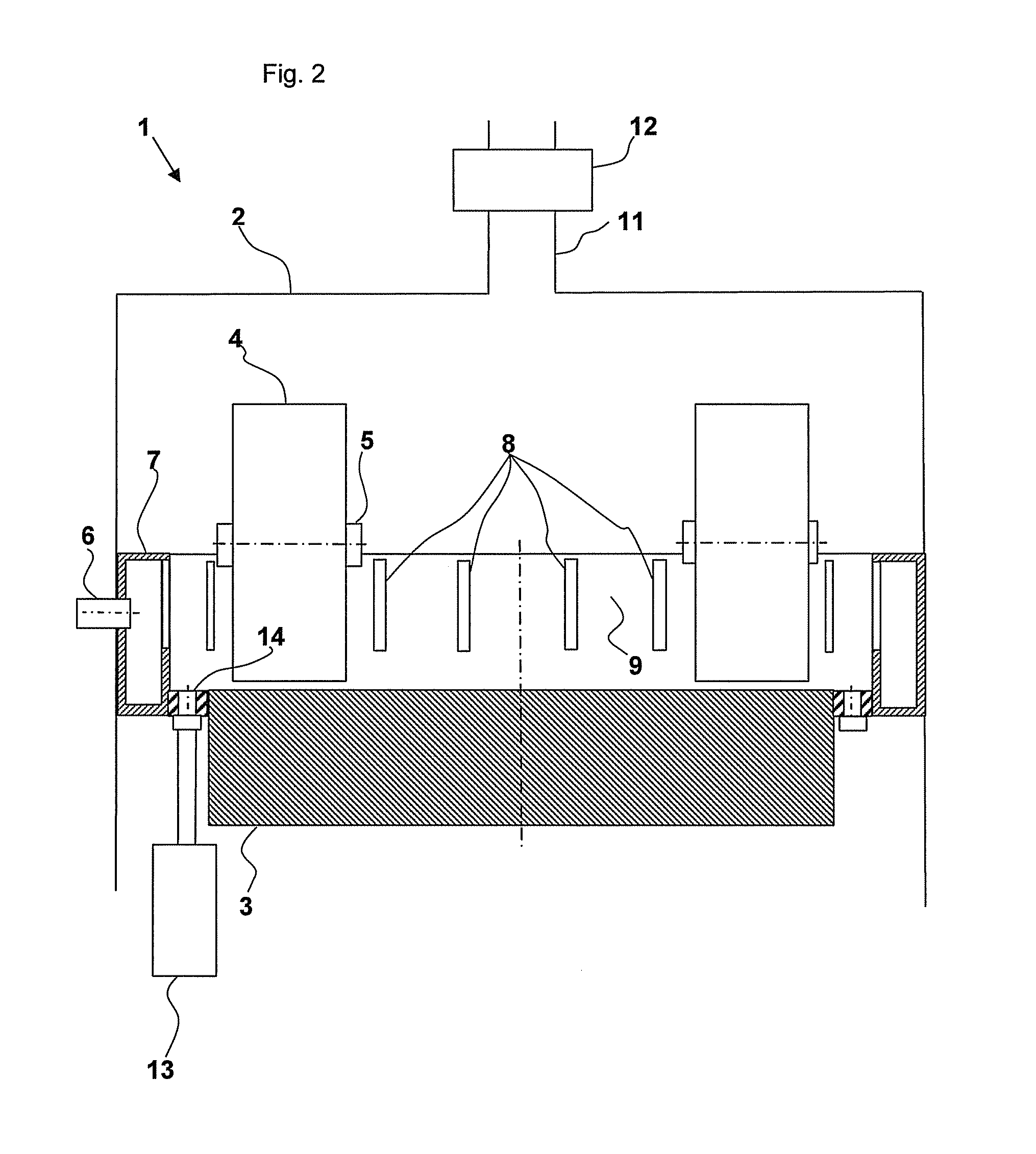Roller mill with gas duct
a technology of gas ducts and roller mills, applied in the field of roller mills, can solve problems such as low pressure loss
- Summary
- Abstract
- Description
- Claims
- Application Information
AI Technical Summary
Benefits of technology
Problems solved by technology
Method used
Image
Examples
Embodiment Construction
[0018]FIG. 1 shows a sectional view of a roller mill 1 with a mill housing 2 surrounding a substantially horizontal grinding table 3. A number of rollers 4, each rotating about a roller shaft 5, are configured for interactive operation with the grinding table 3. Raw material is continuously directed to the grinding table 3 through a feed inlet (not shown). Gases are introduced via a gas inlet 6 connected to an annular duct 7 which is situated around the outer circumference of the grinding table 3. The annular duct has openings 8 in a wall 9 facing the grinding table 3. In this way the gases introduced via the gas inlet 6 to the annular duct 7 are directed to the grinding table 3 through the openings 8 in the annular duct 7. The ground material suspended in gases is extracted through an outlet 11 in the upper part of the mill housing 2 by means of a fan (not shown). The openings 8 in the annular duct 7 are placed above the upper surface of the grinding table 3 and the annular duct 7 ...
PUM
 Login to View More
Login to View More Abstract
Description
Claims
Application Information
 Login to View More
Login to View More - R&D
- Intellectual Property
- Life Sciences
- Materials
- Tech Scout
- Unparalleled Data Quality
- Higher Quality Content
- 60% Fewer Hallucinations
Browse by: Latest US Patents, China's latest patents, Technical Efficacy Thesaurus, Application Domain, Technology Topic, Popular Technical Reports.
© 2025 PatSnap. All rights reserved.Legal|Privacy policy|Modern Slavery Act Transparency Statement|Sitemap|About US| Contact US: help@patsnap.com



